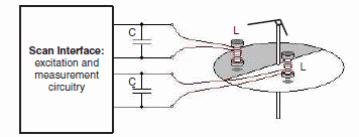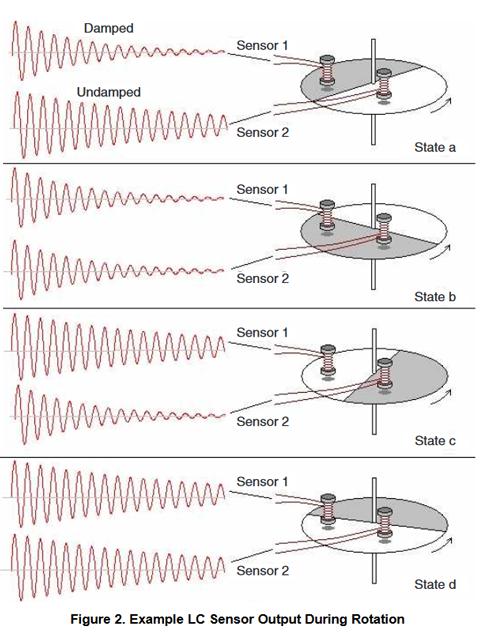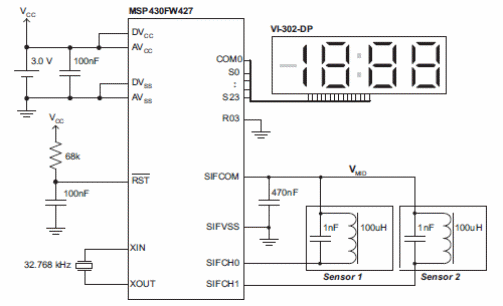Note: Although the article is not current, it can be implemented with newer versions of MSP430.
The Operation principle
The idea is to use a non-contact sensing system through an LC circuit (coil and capacitor) as shown in Figure 1.

The same system can also be used in detecting the flow of fluids, such as meters of water flow, heat, etc.
In the case of a flow meter, the flow is converted into a rotational movement which can then be measured by the suggested technique.
We position the coil of an LC resonant circuit near a rotating plate, as shown in the figure. Half of the plate is covered with a metal plate such as copper, for example.
This way the damping factor of the resonant circuit will depend on the proximity of the coil to the plate. This damping factor is precisely the magnitude detected by the circuit that serves as a parameter for the measurement to be performed.
With the use of a second sensor it is also possible to detect the direction of the rotation.
In Figure 2 we show what occurs with the damping of the LC circuits during the movement of the rotor used in the sensing.

Once the signals from the two sensors are scanned, it is possible to perform the measurement. See in Figure 3 how these signals can be scanned.

The complete circuit of the system is then shown in Figure 4, using one of the microcontrollers from the MSP430 family by Texas Instruments.

In the Application Report of Texas Instruments, readers will find details about the values of the components used and the performance achieved for the circuit.
Information can also be obtained on Texas Instruments www.ti.com



